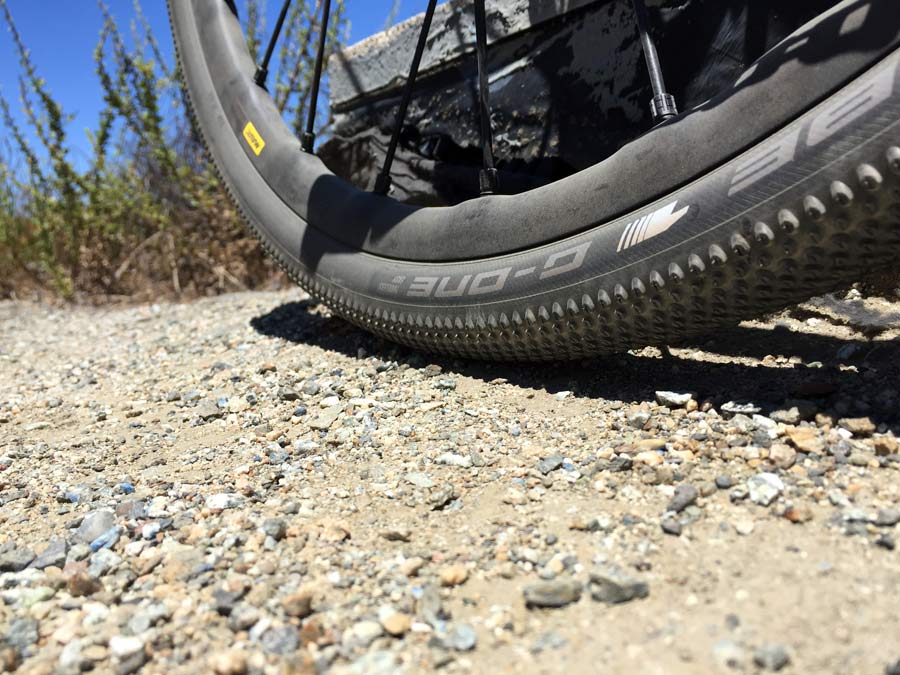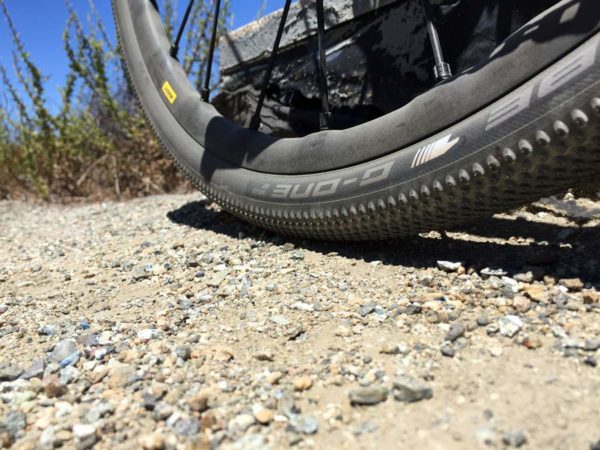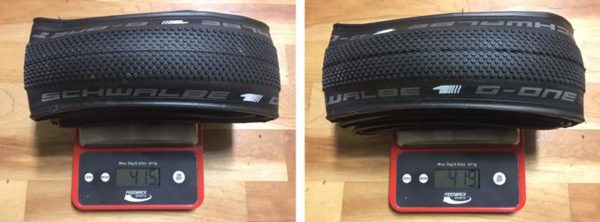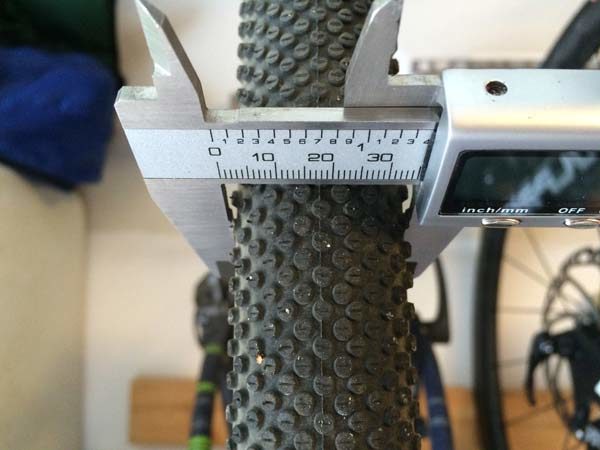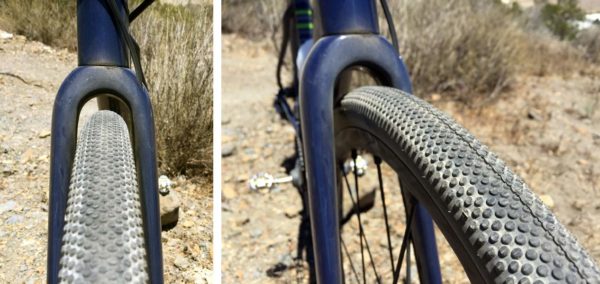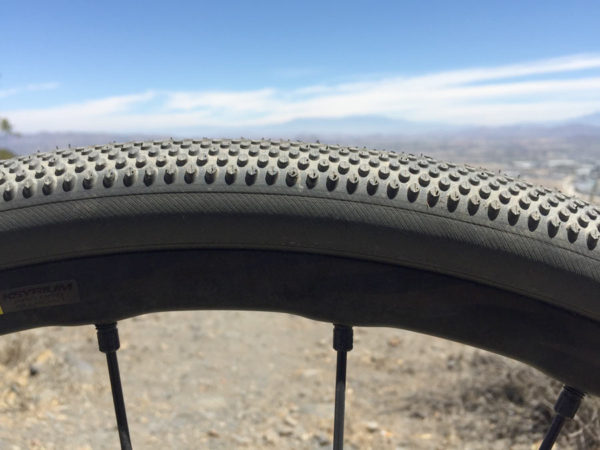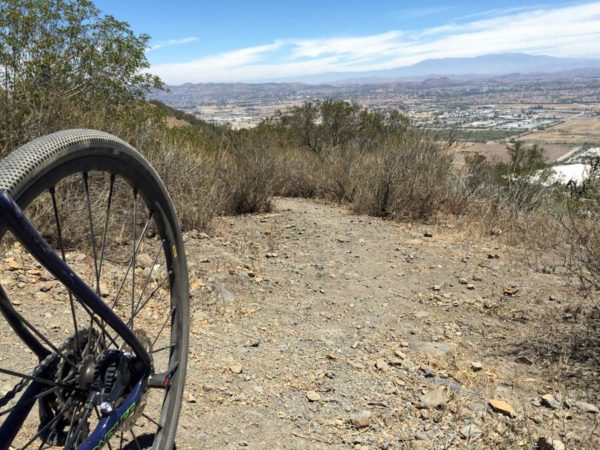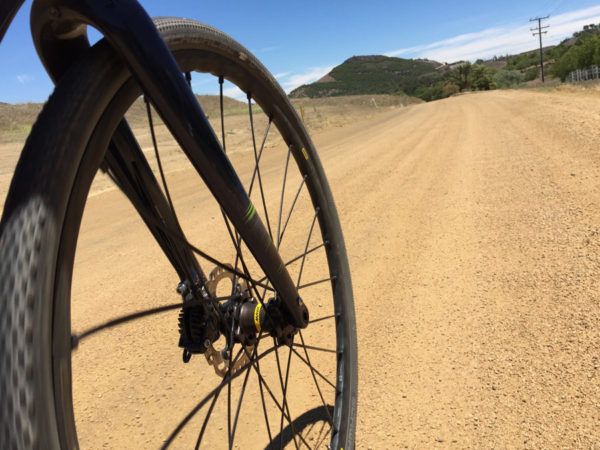There’s the dream of gravel riding, and then there’s the reality of heading out your door on paved roads to string together snippets of dirt trail, backroads and the occasional gravel access road. Or, at least for us urbanites, that’s more often the case than not. And for those situations, a tire like the Schwalbe G-One makes a lot of sense.
It rolls fast, rides smooth and quiet on the tarmac, and has enough traction to tackle some pebble infused routes sans drama. It also makes for a great race tire if your course is hardpacked and dry. We threw a set on the scale, measured ’em, then hit the (off) road…
Our 700×35 tires weighed in at 415g and 419g.
On Mavic’s Ksyrium Pro Disc Allroad wheels, they measured just a bit wider than 35mm. Those rims claim a 19mm inside width (24mm external) and are tubeless ready out of the box thanks to Mavic’s FORE rim drilling and spoke system that leaves the rim bed fully closed. Add in UST certification and setup (with sealant) is quick and easy. I’ve found Schwalbe’s mountain bike tires to be among the easiest to set up tubeless, and these were no exception.
It’s worth pointing out that Mavic’s Allroad wheels were designed with their own brand tires in 28mm to 30mm widths. Here, the wider 35mm Schwalbe is a little wider than Mavic’s intentions and ends up very well rounded…borderline a little tall. There’s a growing notion that rim widths need to be more carefully matched to tire widths for optimum safety and performance (something Mavic’s been a vocal proponent of for years, actually), so just something to keep in mind as you’re setting up your own gravel monster.
Even with Schwalbes measuring out slightly wider than their specs suggest and the rims were designed for, they cornered predictably. They’re rated for 45-70psi, and I started out at 55psi. That was great on the pavement, but once I hit the dirt, it was a little rough. Adjusting down to about 42 felt better, and I experimented as low as ~38 without issues. I stopped there, so I can’t comment on lower pressures. At 6’2″ and ~195 when fully dressed and kitted up with phone, tool, etc. in the jersey pocket, ~42psi felt about right on most surfaces and definitely right off road. Obviously, going outside of a manufacturer’s recommendations means taking your safety into your own hands, so I’m not recommending you drop below 45psi, but it worked for me.
The G-One uses a small circular nub tread profile that’s tightly spaced. There’s no center line per se, but it rolls very well on the road and doesn’t make much noise (in contrast to knobbier tires with larger gaps that can be noisy on pavement). The nubs get progressively, slightly taller as they reach the edges to enhance cornering grip off road.
The G-One uses a 127tpi casing with single durometer rubber and their MicroSkin layered into it during construction. The MicroSkin pulls double duty as and air-impermeable barrier to ease tubeless setup and a medium-security puncture protection shield. It’s lighter than the SnakeSkin used in their mountain bike tires, but makes for a more supple tire. More on the tubeless tech and construction in this post. It’s available in 700 x 35, 700 x 40, and 650b x 40. Retail price sits around $67 USD.
I was able to stand and pedal up steep pitches with loose rocks just fine once I adjusted the pressure down to that ~42psi mark. Heading back down the same trail required a little caution, but they hooked up better then I thought considering the tread height and density.
Long, smooth gravel roads are where the G-One shines, though. Here, I could comfortably carve back and forth at 20mph. The braking bumps on some descents rattled me, but the tires kept their composure. They even floated through sandy patches in a predictable manner. Well, as predictable as deep soft sand can be, anyway.
The G-One’s micro dot tread pattern is somewhat unique in the segment. It provides reasonable grip on and off road, making it a perfect option if your rides are typically mixed surface, dry, and you like to go fast.
